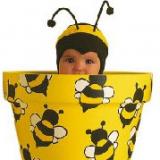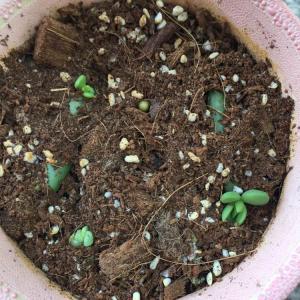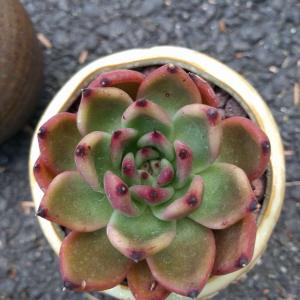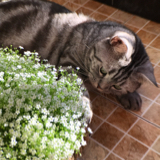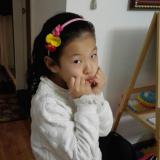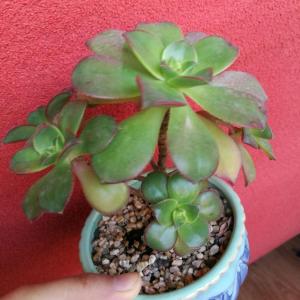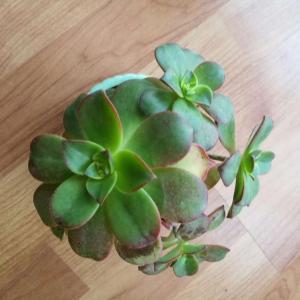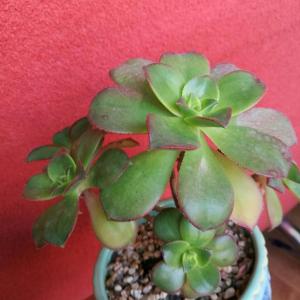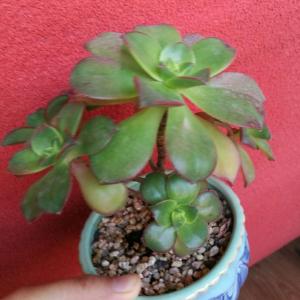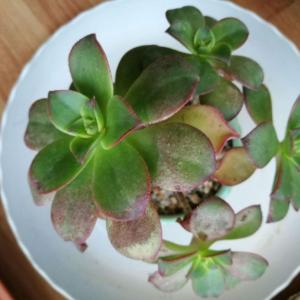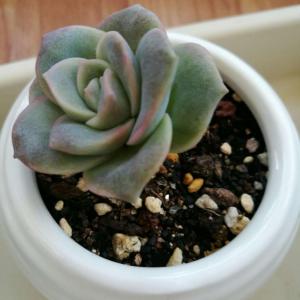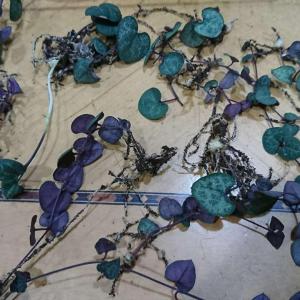文章
Miss Chen
2018年04月08日

Daikon radishes have long, fleshy taproots that are used for a variety of purposes. Daikon radishes are generally 2 to 4 inches in diameter and 6 to 20 inches long. The three distinct shapes are spherical, oblong and cylindrical. The uses for Daikon radishes are as varied as the shapes, colors and sizes they come in.

Origins of Daikon Radishes
Also called oilseed radish, Daikon radishes (Raphanus sativus var. oleiferus) comes from two Japanese words: "dia" (meaning large) and "kon" (meaning root). Thought to have originated in the Mediterranian, Daikon radishes were brought to China around 500 B.C. and are still a staple in food dishes across Asia. Most Daikon radishes are white, but they can be yellow, green or black.
Uses for Cover Cropping
Daikon radishes are grown worldwide for cover cropping and food production. Cover cropping is using the natural properties of one or more plant species to help soil, reduce weeds and increase nutrient content for the benefit of the primary crop. Daikon radishes have been found to penetrate tough soils, absorb large amounts of nitrogen and provide a large above-ground foliage cover to suppress weeds. Daikon radishes germinate quickly, grow in cooler temperatures and are often planted in the fall. Left in the ground over winter to decompose, they then release the nitrogen back into the soil for next season's crop.

Culinary Uses
Daikon radishes are the most widely grown vegetable in Japan. Daikon can be eaten raw, fried, grilled or boiled. When eaten raw, Daikon radishes are spicy. They become mild when processed. Daikon radishes are a good source of vitamin C, phosphorus and potassium. Daikon radishes are also low in calories (only about 18 calories per 100g) and are rich in enzymes to help aid in digestion.
When to Harvest
When used as a food crop, Daikon radishes can be harvested approximately 60 days after planting. If used for processing, roots should be allowed to grow to 12 to 14 inches. For fresh market sales, harvest roots at 2 1/2 inches. Tops break off easily during harvesting, so radishes should be harvested by hand. Use a digging fork to gently lift and loosen the soil around the radishes, then gently pull on the tops as close to the ground as possible. If you plant several crops in a row, you can harvest Daikon radishes for several weeks.

Origins of Daikon Radishes
Also called oilseed radish, Daikon radishes (Raphanus sativus var. oleiferus) comes from two Japanese words: "dia" (meaning large) and "kon" (meaning root). Thought to have originated in the Mediterranian, Daikon radishes were brought to China around 500 B.C. and are still a staple in food dishes across Asia. Most Daikon radishes are white, but they can be yellow, green or black.
Uses for Cover Cropping
Daikon radishes are grown worldwide for cover cropping and food production. Cover cropping is using the natural properties of one or more plant species to help soil, reduce weeds and increase nutrient content for the benefit of the primary crop. Daikon radishes have been found to penetrate tough soils, absorb large amounts of nitrogen and provide a large above-ground foliage cover to suppress weeds. Daikon radishes germinate quickly, grow in cooler temperatures and are often planted in the fall. Left in the ground over winter to decompose, they then release the nitrogen back into the soil for next season's crop.

Culinary Uses
Daikon radishes are the most widely grown vegetable in Japan. Daikon can be eaten raw, fried, grilled or boiled. When eaten raw, Daikon radishes are spicy. They become mild when processed. Daikon radishes are a good source of vitamin C, phosphorus and potassium. Daikon radishes are also low in calories (only about 18 calories per 100g) and are rich in enzymes to help aid in digestion.
When to Harvest
When used as a food crop, Daikon radishes can be harvested approximately 60 days after planting. If used for processing, roots should be allowed to grow to 12 to 14 inches. For fresh market sales, harvest roots at 2 1/2 inches. Tops break off easily during harvesting, so radishes should be harvested by hand. Use a digging fork to gently lift and loosen the soil around the radishes, then gently pull on the tops as close to the ground as possible. If you plant several crops in a row, you can harvest Daikon radishes for several weeks.
0
1
文章
Miss Chen
2018年04月06日

Description: This perennial wildflower is 1-4' tall. Initially, evergreen basal leaves are produced, forming a rosette about 4-6" across; these leaves develop during the late fall and persist into the spring. Later, a central stem develops that becomes branched in the upper half. Both the central and lateral stems are terete and evenly pubescent. Along each stem, there are alternate leaves up to 4" long and 2½" across. These leaves are variable in shape: the lower leaves are cordate to ovate-cordate (like the basal leaves), the middle leaves are ovate-cordate to lanceolate, while the upper leaves are linear to short and scale-like. The alternate leaves become smaller in size as they ascend the stems. They are dull medium green, sparsely short-canescent on their upper surfaces, and more densely short-pubescent on their upper surfaces. The margins of the leaves are usually smooth, although some leaves may be sparsely dentate-crenate.

The central stem terminates in a panicle of flowerheads that is about twice as long as it is across; the stronger upper stems often produce smaller panicles of flowerheads. The collective weight of these flowerheads often causes the entire plant to lean partially sideways. Each daisy-like flowerhead is ¾–1¼" across, consisting of 20-35 rays florets and a similar number of disk florets. Depending on the local genotype of the plant, some flowerheads may have up to 50 ray florets, but this is less common. The ray florets of the flowers are usually blue-violet, but sometimes they are white. The disk florets are yellow, but become more orange-red colored with age. At the base of each flowerhead, there are several series of strongly recurved floral bracts. These bracts are linear-lanceolate in shape and usually finely pubescent. The blooming period occurs from late summer into the fall and lasts about 1-2 months. Usually, several flowers are in bloom at the same time. There is no noticeable floral scent. Each disk or ray floret is replaced by a small achene that is narrowly obovoid. At the apex of each achene, there is a small tuft of tawny hairs. These achenes are distributed by the wind. The root system is fibrous and short-rhizomatous. Older plants may produce a small caudex. Vegetative offsets can develop from the rhizomes.

Cultivation: The preference is partial sun, mesic to dry conditions, and soil containing clay-loam or rocky-loam. Decaying organic material is beneficial to growth and helps to retain moisture. Like other woodland asters, this species often leans over to one side when it flowers.
Range & Habitat: The native Many-Rayed Aster is largely restricted to west-central and south-west Illinois, where it is uncommon to occasional (see Distribution Map). Elsewhere in the state, it is absent. This species is endemic to the mid-section of the United States, where it is found primarily in Arkansas, Missouri, and Illinois. Habitats include upland oak woodlands, upland oak savannas, thinly wooded bluffs along major rivers, partially shaded cliffs, rocky ledges, and various kinds of glades (limestone, sandstone, chert, etc.). This aster is fairly conservative ecologically, but it will adapt to minor levels of disturbance and probably benefits from occasional wildfires.
Faunal Associations: The nectar and pollen of the flowers attract a variety of insects, including long-tongued bees, short-tongued bees, Syrphid flies, bee flies, and small- to medium-sized butterflies. A specialist pollinator of asters is the bee Andrena simplex. Many insects feed on various parts of asters (leaves, flowerheads, stems, etc.), including the caterpillars of the butterflies Chlosyne nycteis (Silvery Checkerspot) and Phyciodes tharos (Pearl Crescent); other species are listed in the Moth Table (moths & butterflies) and the Insect Table (primarily aphids, leaf beetles, & plant bugs). The Ruffed Grouse and Wild Turkey feed on the leaves, flowerheads, and seeds of asters (especially those species occurring in woodlands and savannas). Mammals feeding on asters include the White-Tailed Deer (foliage), Cottontail Rabbit (foliage), and White-Footed Mouse (seeds). Asters help to provide cover for wildlife.

Photographic Location: The wildflower garden of the webmaster in Urbana, Illinois.
Comments: There are many aster species in Illinois (over 35), and this is one of the less common species. In many ways, Many-Rayed Aster resembles the more common Symphyotrichum drummondii (Drummond's Aster), but the former has larger flowerheads (at least ¾" across) with strongly recurved floral bracts. In contrast, Drummond's Aster (and many other woodland/savanna asters) has flowerheads about ½–¾" across and straight floral bracts. As the common name suggests, Many-Rayed Aster has abundant ray florets (20-35 or more), while other woodland/savanna asters typically have 10-20 ray florets. I am somewhat partial to Many-Rayed Aster because it is easy to grow, the flowerheads are a little larger in size, and they are usually more showy than the flowerheads of other woodland/savanna asters. A scientific synonym of this species is Aster anomalus, and another common name is Cliff Aster.

The central stem terminates in a panicle of flowerheads that is about twice as long as it is across; the stronger upper stems often produce smaller panicles of flowerheads. The collective weight of these flowerheads often causes the entire plant to lean partially sideways. Each daisy-like flowerhead is ¾–1¼" across, consisting of 20-35 rays florets and a similar number of disk florets. Depending on the local genotype of the plant, some flowerheads may have up to 50 ray florets, but this is less common. The ray florets of the flowers are usually blue-violet, but sometimes they are white. The disk florets are yellow, but become more orange-red colored with age. At the base of each flowerhead, there are several series of strongly recurved floral bracts. These bracts are linear-lanceolate in shape and usually finely pubescent. The blooming period occurs from late summer into the fall and lasts about 1-2 months. Usually, several flowers are in bloom at the same time. There is no noticeable floral scent. Each disk or ray floret is replaced by a small achene that is narrowly obovoid. At the apex of each achene, there is a small tuft of tawny hairs. These achenes are distributed by the wind. The root system is fibrous and short-rhizomatous. Older plants may produce a small caudex. Vegetative offsets can develop from the rhizomes.

Cultivation: The preference is partial sun, mesic to dry conditions, and soil containing clay-loam or rocky-loam. Decaying organic material is beneficial to growth and helps to retain moisture. Like other woodland asters, this species often leans over to one side when it flowers.
Range & Habitat: The native Many-Rayed Aster is largely restricted to west-central and south-west Illinois, where it is uncommon to occasional (see Distribution Map). Elsewhere in the state, it is absent. This species is endemic to the mid-section of the United States, where it is found primarily in Arkansas, Missouri, and Illinois. Habitats include upland oak woodlands, upland oak savannas, thinly wooded bluffs along major rivers, partially shaded cliffs, rocky ledges, and various kinds of glades (limestone, sandstone, chert, etc.). This aster is fairly conservative ecologically, but it will adapt to minor levels of disturbance and probably benefits from occasional wildfires.
Faunal Associations: The nectar and pollen of the flowers attract a variety of insects, including long-tongued bees, short-tongued bees, Syrphid flies, bee flies, and small- to medium-sized butterflies. A specialist pollinator of asters is the bee Andrena simplex. Many insects feed on various parts of asters (leaves, flowerheads, stems, etc.), including the caterpillars of the butterflies Chlosyne nycteis (Silvery Checkerspot) and Phyciodes tharos (Pearl Crescent); other species are listed in the Moth Table (moths & butterflies) and the Insect Table (primarily aphids, leaf beetles, & plant bugs). The Ruffed Grouse and Wild Turkey feed on the leaves, flowerheads, and seeds of asters (especially those species occurring in woodlands and savannas). Mammals feeding on asters include the White-Tailed Deer (foliage), Cottontail Rabbit (foliage), and White-Footed Mouse (seeds). Asters help to provide cover for wildlife.

Photographic Location: The wildflower garden of the webmaster in Urbana, Illinois.
Comments: There are many aster species in Illinois (over 35), and this is one of the less common species. In many ways, Many-Rayed Aster resembles the more common Symphyotrichum drummondii (Drummond's Aster), but the former has larger flowerheads (at least ¾" across) with strongly recurved floral bracts. In contrast, Drummond's Aster (and many other woodland/savanna asters) has flowerheads about ½–¾" across and straight floral bracts. As the common name suggests, Many-Rayed Aster has abundant ray florets (20-35 or more), while other woodland/savanna asters typically have 10-20 ray florets. I am somewhat partial to Many-Rayed Aster because it is easy to grow, the flowerheads are a little larger in size, and they are usually more showy than the flowerheads of other woodland/savanna asters. A scientific synonym of this species is Aster anomalus, and another common name is Cliff Aster.
0
0
文章
Miss Chen
2018年04月06日

Description: This branching shrub is 2-4' tall. The trunk and lower branches are woody and brown; they are covered with strips of loose shaggy bark. The middle to upper branches are reddish purple to brown and variably hairy. The blades of the opposite leaves are up to 2" long and 1¼" across; they are oval-ovate and smooth along their margins. The upper surface of each leaf blade is medium green and hairless to slightly pubescent, while the lower surface is whitish green and slightly pubescent to very pubescent. Each leaf has a short petiole up to ¼" long. Leaf venation is pinnate.
At the axils of some leaves, there develops dense clusters of greenish yellow flowers that are sessile, or nearly so. Each flower is about ¼" long, consisting of a short tubular corolla with 5 lobes, a short green calyx with 5 teeth, and an inferior ovary that is pale green and globoid-ovoid in shape. Inside the corolla, there are 5 stamens surrounding a hairy style. The blooming period occurs during the late spring or summer. Each flower is replaced by a berry containing 2 seeds. The mature berries are about ¼" long, reddish purple, and ovoid-globoid in shape; the texture of their flesh is somewhat dry. The seeds are oblongoid and flattened. The root system consists of a woody branching taproot.

Cultivation: Coralberry adapts to partial sun, moist to dry conditions, and a loamy or rocky soil.
Range & Habitat: The native Coralberry is occasional to locally common in the southern half of Illinois, becoming less common or absent in the northern half of the state (see Distribution Map). Habitats include thin rocky woodlands, woodland openings, woodland borders, areas along woodland paths, powerline clearances in wooded areas, thickets, and limestone glades. Sometimes this shrub is grown as an ornamental plant in gardens, from which it occasionally escapes. Disturbance in wooded areas is beneficial if it reduces excessive shade from overhead trees.

Faunal Associations: The flowers attract bees, wasps, and flies primarily. These insects suck nectar from the flowers, although some of the bees also collect pollen. The caterpillars of the moths Hemaris diffinis (Snowberry Clearwing), Hemaris thysbe (Hummingbird Clearwing), and Hesperumia sulphuraria (Sulfur Moth) feed on the foliage of Coralberry and other Symphoricarpos spp. The aphid Apathargelia symphoricarpi and the thrips Thrips winnemanae suck juices from the undersides of the leaves. The berries persist into the fall and winter and are eaten primarily by Robins (Turdus migratorius); the buds and berries are also eaten by the Bobwhite. Coralberry is a favorite food plant of the White-Tailed Deer and it is often heavily browsed. Because of its dense branching habit and abundant leaves, this shrub provides good cover for wildlife.
Photographic Location: A powerline clearance at Busey Woods in Urbana, Illinois.

Comments: Coralberry is a rather small sprawling shrub with attractive foliage and berries. It is an easy shrub to identify in natural areas, particularly during the fall, because of the purplish red berries. Other Symphoricarpos spp. (Snowberry, Wolfberry) in Illinois have white or greenish white berries. A related group of plants, Lonicera spp. (Honeysuckles), are either vines or upright shrubs. Like Coralberry, Honeysuckles often produce berries in clusters near the leaves, but their berries are usually bright red and more juicy. Generally, the corollas of Honeysuckle flowers are larger in size than those of Coralberry, and they have long slender lobes. All of these plants produce pairs of opposite leaves on woody stems; the margins of their leaves are smooth or slightly wavy, but they never have teeth, unlike the leaves of many other shrubs. Another common name of Symphoricarpos orbiculatus is Buckbrush, which refers to the attractiveness of this shrub to deer as a food plant.
At the axils of some leaves, there develops dense clusters of greenish yellow flowers that are sessile, or nearly so. Each flower is about ¼" long, consisting of a short tubular corolla with 5 lobes, a short green calyx with 5 teeth, and an inferior ovary that is pale green and globoid-ovoid in shape. Inside the corolla, there are 5 stamens surrounding a hairy style. The blooming period occurs during the late spring or summer. Each flower is replaced by a berry containing 2 seeds. The mature berries are about ¼" long, reddish purple, and ovoid-globoid in shape; the texture of their flesh is somewhat dry. The seeds are oblongoid and flattened. The root system consists of a woody branching taproot.

Cultivation: Coralberry adapts to partial sun, moist to dry conditions, and a loamy or rocky soil.
Range & Habitat: The native Coralberry is occasional to locally common in the southern half of Illinois, becoming less common or absent in the northern half of the state (see Distribution Map). Habitats include thin rocky woodlands, woodland openings, woodland borders, areas along woodland paths, powerline clearances in wooded areas, thickets, and limestone glades. Sometimes this shrub is grown as an ornamental plant in gardens, from which it occasionally escapes. Disturbance in wooded areas is beneficial if it reduces excessive shade from overhead trees.

Faunal Associations: The flowers attract bees, wasps, and flies primarily. These insects suck nectar from the flowers, although some of the bees also collect pollen. The caterpillars of the moths Hemaris diffinis (Snowberry Clearwing), Hemaris thysbe (Hummingbird Clearwing), and Hesperumia sulphuraria (Sulfur Moth) feed on the foliage of Coralberry and other Symphoricarpos spp. The aphid Apathargelia symphoricarpi and the thrips Thrips winnemanae suck juices from the undersides of the leaves. The berries persist into the fall and winter and are eaten primarily by Robins (Turdus migratorius); the buds and berries are also eaten by the Bobwhite. Coralberry is a favorite food plant of the White-Tailed Deer and it is often heavily browsed. Because of its dense branching habit and abundant leaves, this shrub provides good cover for wildlife.
Photographic Location: A powerline clearance at Busey Woods in Urbana, Illinois.

Comments: Coralberry is a rather small sprawling shrub with attractive foliage and berries. It is an easy shrub to identify in natural areas, particularly during the fall, because of the purplish red berries. Other Symphoricarpos spp. (Snowberry, Wolfberry) in Illinois have white or greenish white berries. A related group of plants, Lonicera spp. (Honeysuckles), are either vines or upright shrubs. Like Coralberry, Honeysuckles often produce berries in clusters near the leaves, but their berries are usually bright red and more juicy. Generally, the corollas of Honeysuckle flowers are larger in size than those of Coralberry, and they have long slender lobes. All of these plants produce pairs of opposite leaves on woody stems; the margins of their leaves are smooth or slightly wavy, but they never have teeth, unlike the leaves of many other shrubs. Another common name of Symphoricarpos orbiculatus is Buckbrush, which refers to the attractiveness of this shrub to deer as a food plant.
0
0
文章
Miss Chen
2018年04月06日

Description: This perennial wildflower is 4-12" tall; it is branched at the base and often branched above. The ascending to erect stems are light to medium green, hairy, and terete. Alternate trifoliate leaves occur at intervals along the stems. The leaflets are ½-1½" long and 4-8 mm. across; they are elliptic in shape, while their margins are entire (smooth) and ciliate. The upper leaflet surface is medium green and glabrous to sparsely short-pubescent, while the lower leaflet surface is light green and sparsely short-pubescent. The petioles of the trifoliate leaves are up to ¼" long, light green, and hairy. The base of each petiole and a portion of the adjacent stem are surrounded by a pair of of green to brown stipules; each stipule tapers to a ciliate beak. The terminal leaflets have petiolules (basal stalklets) up to ¼" long, while the lateral leaflets are sessile (or nearly so). Leaf venation is pinnate; the veins along the upper leaflet surfaces often appear to be shiny. The flowers are produced individually (rare in clusters) from the axils of the leaves. The pedicels of the flowers are up to ¼" long. Each flower has 5 yellow petals, a light green calyx with 4-5 lobes, and the enclosed reproductive organs. The petals are arranged in a pea-like floral structure, consisting of a large banner, a pair of forward-projecting wings, and an enclosed keel. The flowers are oriented either laterally (with erect banners) or they are held erect (with the banners at the bottom).

The blooming period occurs from late spring to late summer, lasting about 1½-3 months. Only a few flowers are in bloom at the same time. The flowers are replaced by small seedpods consisting of two segments: the first segment is infertile and stipe-like in shape, while the second segment contains a single seed. The root system consists of a taproot. This plant spreads by reseeding itself.
Cultivation: The preference is full or partial sun, mesic to dry conditions, and a somewhat acidic infertile soil where there is reduced competition from other kinds of ground vegetation.
Range & Habitat: The native Pencil Flower is fairly common in southern Illinois, while in the rest of the state it is rare or absent (see Distribution Map). Illinois lies along the northern range limit of this species. Habitats consist of upland rocky woodlands, bluffs, upland savannas, sandstone glades, prairies, and fields. Pencil Flower occurs in both higher quality natural areas and disturbed areas, especially where sandstone is close to the ground surface.
Faunal Associations: The flowers of Pencil Flower are cross-pollinated primarily by bees (Robertson, 1929). This is one of the host plants of a leaf beetle, Sumitrosis ancoroides. The foliage is highly palatable to hoofed mammalian herbivores (Banta & Thro, 1995).
Photographic Location: An upland rocky woodland in southern Illinois.
Comments: Because it produces relatively few flowers at the same time and it is relatively small in size, Pencil Flower is fairly easy to overlook. It can be distinguished from similar species in the Bean family by the shiny veins on its leaves, stipules with beak-like ciliate tips, and asymmetrical seedpods (a narrow infertile segment followed by a broader fertile segment). There is some variability of this species across its range in regards to the hairiness of its stems, the erectness of its stems, whether flowers are produced individually or in small groups, etc. At the present time, these are regarded as variations of a single polymorphic species.

The blooming period occurs from late spring to late summer, lasting about 1½-3 months. Only a few flowers are in bloom at the same time. The flowers are replaced by small seedpods consisting of two segments: the first segment is infertile and stipe-like in shape, while the second segment contains a single seed. The root system consists of a taproot. This plant spreads by reseeding itself.
Cultivation: The preference is full or partial sun, mesic to dry conditions, and a somewhat acidic infertile soil where there is reduced competition from other kinds of ground vegetation.
Range & Habitat: The native Pencil Flower is fairly common in southern Illinois, while in the rest of the state it is rare or absent (see Distribution Map). Illinois lies along the northern range limit of this species. Habitats consist of upland rocky woodlands, bluffs, upland savannas, sandstone glades, prairies, and fields. Pencil Flower occurs in both higher quality natural areas and disturbed areas, especially where sandstone is close to the ground surface.
Faunal Associations: The flowers of Pencil Flower are cross-pollinated primarily by bees (Robertson, 1929). This is one of the host plants of a leaf beetle, Sumitrosis ancoroides. The foliage is highly palatable to hoofed mammalian herbivores (Banta & Thro, 1995).
Photographic Location: An upland rocky woodland in southern Illinois.
Comments: Because it produces relatively few flowers at the same time and it is relatively small in size, Pencil Flower is fairly easy to overlook. It can be distinguished from similar species in the Bean family by the shiny veins on its leaves, stipules with beak-like ciliate tips, and asymmetrical seedpods (a narrow infertile segment followed by a broader fertile segment). There is some variability of this species across its range in regards to the hairiness of its stems, the erectness of its stems, whether flowers are produced individually or in small groups, etc. At the present time, these are regarded as variations of a single polymorphic species.
0
0
文章
Miss Chen
2018年04月06日

Description: This perennial wildflower is 1-5' tall and either unbranched or sparingly so. The central stem is erect, terete, densely hairy or pubescent, and light green to brownish red. The alternate leaves are up to 4" long and 1½" across; they are ovate, narrowly ovate, ovate-lanceolate, or ovate-oblanceolate in shape with crenate-serrate margins. The upper surfaces of the leaves are deeply indented by pinnate veins; this characteristic provides them with a somewhat wrinkled appearance. Additionally, the upper surfaces of the leaves are slightly pubescent to hairless, medium to dark green, and usually dull-colored. The central stem terminates in a panicle of yellow flowerheads of variable shape and size. Small plants often have narrow panicles that resemble racemes, while large plants often have broad panicles with spreading-recurved branches. The upper stems of some large plants may produce panicles that are smaller than that of the central stem.

Each yellow flowerhead spans about 1/8" (3 mm.) across, consisting of 4-8 ray florets and a similar number of tubular disk florets. The base of each flowerhead consists of overlapping scale-like bracts that are yellowish-green. The branches of larger panicles often have small leafy bracts. The blooming period can occur from mid-summer into the fall and lasts about 1-2 months. Each fertile floret is replaced by a small bullet-shaped achene with a short tuft of hairs at its apex. The root system is fibrous and rhizomatous. Vegetative colonies of plants are often formed by the spreading rhizomes.
Cultivation: The preference is full sun to light shade, moist conditions, and soil that is sandy, loamy, or gravelly with a slightly acid pH.
Range & Habitat: The native Wrinkled-Leaved Goldenrod occurs primarily in the southwest corner of Illinois, where it is uncommon. Elsewhere in the state, it is rare or absent (see Distribution Map). Illinois lies at the NW range limit of this species. Habitats include low open woodlands, thickets, sandy swamps, wet sandy prairies, sandy banks of marshes, acid gravelly seeps, sand dunes, and rocky bluffs or cliffs. Usually, this goldenrod is found in moist areas that are sandy or where sandstone is close to the ground surface. Sometimes it is found in gardens, although some cultivars of this species bear little resemblance to the native plants.
Faunal Associations: The nectar and pollen of the flowers attract a wide variety of insects, including small bees, wasps, flies, small butterflies, skippers, and beetles. The caterpillars of many moth species feed on various parts of goldenrods (see Moth Table), while several leaf beetles (Chrysomelidae) feed primarily on the foliage (see Leaf Beetle Table). Other insects that feed on goldenrods include various plant bugs, stink bugs, lace bugs, treehoppers, and leafhoppers; the Bug Table lists some of these species. Insectivorous birds benefit indirectly from goldenrods because of the numerous insects that they attract. Other birds feed directly on goldenrods to a minor extent, including the Indigo Bunting (seeds), Eastern Goldfinch (seeds), Swamp Sparrow (seeds), Ruffed Grouse (leaves), and Greater Prairie Chicken (leaves). White-Tailed Deer and Cottontail Rabbits feed on young foliage to a limited extent, while Meadow Voles eat both the seeds and foliage.
Photographic Location: A sandy bank along a marsh at Jasper-Pulaski Fish and Wildlife Area in northwestern Indiana. The photographed plant is a dwarf (about 1½' tall) that may have been mowed earlier in the year.
Comments: Across it range in the eastern United States, this goldenrod is somewhat variable in appearance. Nonetheless, Wrinkle-Leaved Goldenrod can be distinguished from other goldenrods as follows: 1) the central stem is quite hairy or pubescent, 2) the upper surfaces of the leaves have a wrinkled appearance because of the indentations of their pinnate veins, and 3) individual leaves lack 3 prominent veins that run parallel to each other. This latter characteristic is typical of Solidago canadensis (Canada Goldenrod), Solidago gigantea (Giant Goldenrod), and similar goldenrods. Two other species, Solidago ulmifolia (Elm-Leaved Goldenrod) and Solidago patula (Swamp Goldenrod), have stems that are glabrous or only slightly hairy and their leaves tend to be more thin in texture and shiny than those of Wrinkle-Leaved Goldenrod. Other common names of Solidago rugosa include 'Rough-Stemmed Goldenrod,' 'Rough Goldenrod,' and 'Rough-Leaved Goldenrod.'

Each yellow flowerhead spans about 1/8" (3 mm.) across, consisting of 4-8 ray florets and a similar number of tubular disk florets. The base of each flowerhead consists of overlapping scale-like bracts that are yellowish-green. The branches of larger panicles often have small leafy bracts. The blooming period can occur from mid-summer into the fall and lasts about 1-2 months. Each fertile floret is replaced by a small bullet-shaped achene with a short tuft of hairs at its apex. The root system is fibrous and rhizomatous. Vegetative colonies of plants are often formed by the spreading rhizomes.
Cultivation: The preference is full sun to light shade, moist conditions, and soil that is sandy, loamy, or gravelly with a slightly acid pH.
Range & Habitat: The native Wrinkled-Leaved Goldenrod occurs primarily in the southwest corner of Illinois, where it is uncommon. Elsewhere in the state, it is rare or absent (see Distribution Map). Illinois lies at the NW range limit of this species. Habitats include low open woodlands, thickets, sandy swamps, wet sandy prairies, sandy banks of marshes, acid gravelly seeps, sand dunes, and rocky bluffs or cliffs. Usually, this goldenrod is found in moist areas that are sandy or where sandstone is close to the ground surface. Sometimes it is found in gardens, although some cultivars of this species bear little resemblance to the native plants.
Faunal Associations: The nectar and pollen of the flowers attract a wide variety of insects, including small bees, wasps, flies, small butterflies, skippers, and beetles. The caterpillars of many moth species feed on various parts of goldenrods (see Moth Table), while several leaf beetles (Chrysomelidae) feed primarily on the foliage (see Leaf Beetle Table). Other insects that feed on goldenrods include various plant bugs, stink bugs, lace bugs, treehoppers, and leafhoppers; the Bug Table lists some of these species. Insectivorous birds benefit indirectly from goldenrods because of the numerous insects that they attract. Other birds feed directly on goldenrods to a minor extent, including the Indigo Bunting (seeds), Eastern Goldfinch (seeds), Swamp Sparrow (seeds), Ruffed Grouse (leaves), and Greater Prairie Chicken (leaves). White-Tailed Deer and Cottontail Rabbits feed on young foliage to a limited extent, while Meadow Voles eat both the seeds and foliage.
Photographic Location: A sandy bank along a marsh at Jasper-Pulaski Fish and Wildlife Area in northwestern Indiana. The photographed plant is a dwarf (about 1½' tall) that may have been mowed earlier in the year.
Comments: Across it range in the eastern United States, this goldenrod is somewhat variable in appearance. Nonetheless, Wrinkle-Leaved Goldenrod can be distinguished from other goldenrods as follows: 1) the central stem is quite hairy or pubescent, 2) the upper surfaces of the leaves have a wrinkled appearance because of the indentations of their pinnate veins, and 3) individual leaves lack 3 prominent veins that run parallel to each other. This latter characteristic is typical of Solidago canadensis (Canada Goldenrod), Solidago gigantea (Giant Goldenrod), and similar goldenrods. Two other species, Solidago ulmifolia (Elm-Leaved Goldenrod) and Solidago patula (Swamp Goldenrod), have stems that are glabrous or only slightly hairy and their leaves tend to be more thin in texture and shiny than those of Wrinkle-Leaved Goldenrod. Other common names of Solidago rugosa include 'Rough-Stemmed Goldenrod,' 'Rough Goldenrod,' and 'Rough-Leaved Goldenrod.'
0
0
文章
Miss Chen
2018年04月05日

Description: This perennial herbaceous plant is 1¼–4' tall, producing either solitary or multiple leafy stems from the same root system. The stems are light green, reddish green, or light to medium brown; they are terete and sparsely to moderately short-pubescent. Abundant alternate leaves occur along each stem that become gradually smaller in size as they ascend. The leaf blades are 1-4" long and ¼–1" across; they are elliptic to broadly elliptic, or lanceolate-elliptic, or oblanceolate-elliptic in shape. The margins of leaf blades are entire (toothless) to slightly toothed toward their tips and they are short-ciliate. The upper blade surface is yellowish green or medium green and sparsely covered with minute stiff hairs, providing it with a slightly rough texture; the lower blade surface is light to medium green and glabrous to short-pubescent along the major veins. The leaf blades are either sessile or they have short petioles. Each stem terminates in a cylindrical panicle of flowerheads about 4-10" long. The branches and peduncles of the panicle are light green and more or less covered with short hairs that are usually glandular. Leafy bracts up to 1" long and ¼" across occur along these branches and at the bases of peduncles; these bracts are similar in appearance to the leaves, except they are smaller in size. Individual flowerheads are about 6 mm. (¼") long and 3-4 mm. across.
Each flowerhead has 5-10 ray florets that surround a dense head of 8-20 disk florets. The ray florets are pistillate (female), while the disk florets are perfect (both male and female). The spreading petaloid rays of the flowerhead are golden yellow and narrowly oblong in shape. The tubular corollas of the disk florets are yellow and they have 5 narrow lobes along their upper rims. The base of each flowerhead has a cylindrical urn-shape that is tapered at its base; it is surrounded by phyllaries (floral bracts) in about 4 overlapping series. The phyllaries are light green, linear-lanceolate in shape, and either minutely pubescent or glandular-pubescent (usually the latter); these phyllaries are strongly recurved toward their tips. The blooming period occurs from late summer to mid-autumn, lasting about 3-4 weeks. Afterwards, the florets are replaced by achenes with small tufts of hair; they are distributed by the wind. The bodies of these achenes are about 3 mm. long, bullet-shaped, and either glabrous or slightly short-pubescent. The root system is fibrous and sometimes long-rhizomatous; an older plant usually develops a swollen caudex. This plant spreads by reseeding itself or it can form clonal offspring from rhizomes.

Cultivation: The preference is partial sun, mesic to dry conditions, and a somewhat acidic soil containing rocky material or sand. This plant will adapt to cultivation, however it may require staking to prevent it from toppling over.
Range & Habitat: Downy Ragged Goldenrod is native to southern Illinois, where it is uncommon, while elsewhere within the state it is absent (see Distribution Map). Illinois lies along the northern range-limit of this plant; it occurs primarily in south-central and southeast USA. Habitats include upland woodlands, upland savannas, thinly wooded rocky bluffs, thickets, glades with acidic bedrock, and rocky prairies. In the wooded habitats where this plant occurs, they are typically dominated by oaks and hickories. Outside of Illinois, Downy Ragged Goldenrod also occurs in sandy mixed woodlands (where both hardwood deciduous trees and conifers are present). This plant is normally found in high quality natural areas. Occasional wildfires are probably beneficial in maintaining its populations.

Faunal Associations: Very little is known about the floral-faunal relationships of Downy Ragged Goldenrod specifically. This goldenrod is a significant source of nectar for migrating Monarch butterflies in Arkansas (Rudolph et al., 2006) and the larvae of a leaf beetle, Microrhopala excavata, mine its leaves (Clark et al., 2004). For goldenrods (Solidago spp.) in general, the nectar and pollen of the flowerheads attract a wide variety of insects, including honeybees, bumblebees, little carpenter bees (Ceratina spp.), leaf-cutter bees (Megachile spp.), Halictid bees, masked bees (Hylaeus spp.), Andrenid bees, wasps, Syrphid flies and other flies, butterflies, skippers, and beetles. Several Andrenid bees are oligoleges (specialist pollinators) of goldenrods; this includes Andrena hirticincta, Andrena nubecula, Andrena placata, Andrena simplex, and Andrena solidaginis. In addition, a plasterer bee, Colletes simulans armata, is an oligolege of goldenrods. A wide variety of insects feed destructively on the foliage, flowerheads, stems, roots, and plant juices of various goldenrods. These species include leaf beetles (Microrhopala spp., Ophraella spp., Trirhabda spp.), larvae of leaf-miner flies (Calycomyza spp.), larvae of gall flies (Asteromyia spp., Rhopalomyia spp.), plant bugs (Lygus spp., Polymerus spp., Slaterocoris spp.), Corythucha marmorata (Goldenrod Lace Bug), aphids (Uroleucon spp.), treehoppers (Stictocephala spp.), Aonidomytilus solidaginis (Goldenrod Scale), larvae of Gelechiid moths (Dichomeris spp.), larvae of Schinia nundina (Goldenrod Flower Moth) and other Noctuid moths, larvae of Tortricid moths (Epiblema spp., Eucosma spp., Phaneta spp.), and grasshoppers (Melanoplus spp.); see Clark et al. (2004), Spencer & Steyskal (1986), Felt (1917), Aldrich & Osten-Sacken (1905), Knight (1941), Watson (1928), Wheeler et al. (1983), Cranshaw (2004), Hottes & Frison (1931), Blackman & Eastop (2013), Dennis (1952), Covell (1984/2005), Miller (1987), and Vickery & Kevan (1985) for more information. Vertebrate animals use goldenrods as a source of food to a more limited extent. The seeds of these plants are eaten by such birds as the Indigo Bunting, American Goldfinch, Slate-colored Junco, and Tree Sparrow; the Greater Prairie Chicken feeds on the foliage and flowerheads (DeVore et al., 2004; Martin et al., 1951/1961; Yeatter, 1943). Occasionally, the White-tailed Deer and Cottontail Rabbit also feed on the young foliage of goldenrods (Sotala & Kirkpatrick, 1973; Martin et al., 1951/1961). These plants are a source of food for the Prairie Vole (Cole & Batzli, 1979) and probably other voles.

Photographic Location: The wildflower garden of the webmaster in Urbana, Illinois.
Comments: Sometimes this species is called 'Downy Goldenrod.' There is some variability in the width of leaves, presence of teeth on the leaves, abundance of pubescence, and presence of glandular hairs on this goldenrod across its range. Downy Ragged Goldenrod (Solidago petiolaris) is easy to identify in Illinois because of the recurved phyllaries (floral bracts) of its flowerheads; this is the only goldenrod within the state that has this characteristic, and it is rare among goldenrods (Solidago spp.) elsewhere. One species with this characteristic is Stout Goldenrod (Solidago squarrosa). This latter species is found primarily in northeastern United States. Stout Goldenrod has larger lower leaves than Downy Ragged Goldenrod (Solidago petiolaris), and its lower leaves have more teeth. Overall, it is a less hairy plant than Downy Ragged Goldenrod. The remaining goldenrod with recurved phyllaries, Wright's Goldenrod (Solidago wrightii), is difficult to distinguish from Downy Ragged Goldenrod. Because Wright's Goldenrod occurs some distance away in the southwestern area of the United States, it won't be considered any further.
Each flowerhead has 5-10 ray florets that surround a dense head of 8-20 disk florets. The ray florets are pistillate (female), while the disk florets are perfect (both male and female). The spreading petaloid rays of the flowerhead are golden yellow and narrowly oblong in shape. The tubular corollas of the disk florets are yellow and they have 5 narrow lobes along their upper rims. The base of each flowerhead has a cylindrical urn-shape that is tapered at its base; it is surrounded by phyllaries (floral bracts) in about 4 overlapping series. The phyllaries are light green, linear-lanceolate in shape, and either minutely pubescent or glandular-pubescent (usually the latter); these phyllaries are strongly recurved toward their tips. The blooming period occurs from late summer to mid-autumn, lasting about 3-4 weeks. Afterwards, the florets are replaced by achenes with small tufts of hair; they are distributed by the wind. The bodies of these achenes are about 3 mm. long, bullet-shaped, and either glabrous or slightly short-pubescent. The root system is fibrous and sometimes long-rhizomatous; an older plant usually develops a swollen caudex. This plant spreads by reseeding itself or it can form clonal offspring from rhizomes.

Cultivation: The preference is partial sun, mesic to dry conditions, and a somewhat acidic soil containing rocky material or sand. This plant will adapt to cultivation, however it may require staking to prevent it from toppling over.
Range & Habitat: Downy Ragged Goldenrod is native to southern Illinois, where it is uncommon, while elsewhere within the state it is absent (see Distribution Map). Illinois lies along the northern range-limit of this plant; it occurs primarily in south-central and southeast USA. Habitats include upland woodlands, upland savannas, thinly wooded rocky bluffs, thickets, glades with acidic bedrock, and rocky prairies. In the wooded habitats where this plant occurs, they are typically dominated by oaks and hickories. Outside of Illinois, Downy Ragged Goldenrod also occurs in sandy mixed woodlands (where both hardwood deciduous trees and conifers are present). This plant is normally found in high quality natural areas. Occasional wildfires are probably beneficial in maintaining its populations.

Faunal Associations: Very little is known about the floral-faunal relationships of Downy Ragged Goldenrod specifically. This goldenrod is a significant source of nectar for migrating Monarch butterflies in Arkansas (Rudolph et al., 2006) and the larvae of a leaf beetle, Microrhopala excavata, mine its leaves (Clark et al., 2004). For goldenrods (Solidago spp.) in general, the nectar and pollen of the flowerheads attract a wide variety of insects, including honeybees, bumblebees, little carpenter bees (Ceratina spp.), leaf-cutter bees (Megachile spp.), Halictid bees, masked bees (Hylaeus spp.), Andrenid bees, wasps, Syrphid flies and other flies, butterflies, skippers, and beetles. Several Andrenid bees are oligoleges (specialist pollinators) of goldenrods; this includes Andrena hirticincta, Andrena nubecula, Andrena placata, Andrena simplex, and Andrena solidaginis. In addition, a plasterer bee, Colletes simulans armata, is an oligolege of goldenrods. A wide variety of insects feed destructively on the foliage, flowerheads, stems, roots, and plant juices of various goldenrods. These species include leaf beetles (Microrhopala spp., Ophraella spp., Trirhabda spp.), larvae of leaf-miner flies (Calycomyza spp.), larvae of gall flies (Asteromyia spp., Rhopalomyia spp.), plant bugs (Lygus spp., Polymerus spp., Slaterocoris spp.), Corythucha marmorata (Goldenrod Lace Bug), aphids (Uroleucon spp.), treehoppers (Stictocephala spp.), Aonidomytilus solidaginis (Goldenrod Scale), larvae of Gelechiid moths (Dichomeris spp.), larvae of Schinia nundina (Goldenrod Flower Moth) and other Noctuid moths, larvae of Tortricid moths (Epiblema spp., Eucosma spp., Phaneta spp.), and grasshoppers (Melanoplus spp.); see Clark et al. (2004), Spencer & Steyskal (1986), Felt (1917), Aldrich & Osten-Sacken (1905), Knight (1941), Watson (1928), Wheeler et al. (1983), Cranshaw (2004), Hottes & Frison (1931), Blackman & Eastop (2013), Dennis (1952), Covell (1984/2005), Miller (1987), and Vickery & Kevan (1985) for more information. Vertebrate animals use goldenrods as a source of food to a more limited extent. The seeds of these plants are eaten by such birds as the Indigo Bunting, American Goldfinch, Slate-colored Junco, and Tree Sparrow; the Greater Prairie Chicken feeds on the foliage and flowerheads (DeVore et al., 2004; Martin et al., 1951/1961; Yeatter, 1943). Occasionally, the White-tailed Deer and Cottontail Rabbit also feed on the young foliage of goldenrods (Sotala & Kirkpatrick, 1973; Martin et al., 1951/1961). These plants are a source of food for the Prairie Vole (Cole & Batzli, 1979) and probably other voles.

Photographic Location: The wildflower garden of the webmaster in Urbana, Illinois.
Comments: Sometimes this species is called 'Downy Goldenrod.' There is some variability in the width of leaves, presence of teeth on the leaves, abundance of pubescence, and presence of glandular hairs on this goldenrod across its range. Downy Ragged Goldenrod (Solidago petiolaris) is easy to identify in Illinois because of the recurved phyllaries (floral bracts) of its flowerheads; this is the only goldenrod within the state that has this characteristic, and it is rare among goldenrods (Solidago spp.) elsewhere. One species with this characteristic is Stout Goldenrod (Solidago squarrosa). This latter species is found primarily in northeastern United States. Stout Goldenrod has larger lower leaves than Downy Ragged Goldenrod (Solidago petiolaris), and its lower leaves have more teeth. Overall, it is a less hairy plant than Downy Ragged Goldenrod. The remaining goldenrod with recurved phyllaries, Wright's Goldenrod (Solidago wrightii), is difficult to distinguish from Downy Ragged Goldenrod. Because Wright's Goldenrod occurs some distance away in the southwestern area of the United States, it won't be considered any further.
0
0




